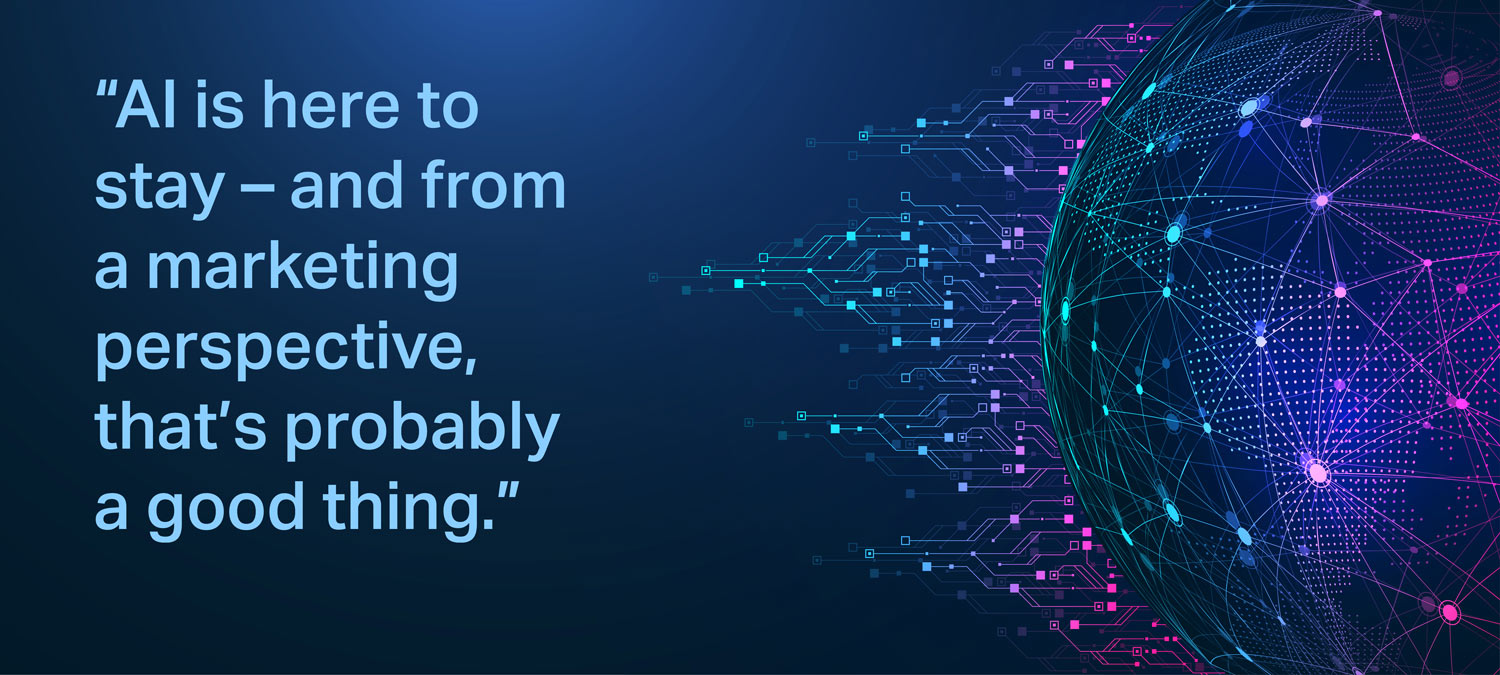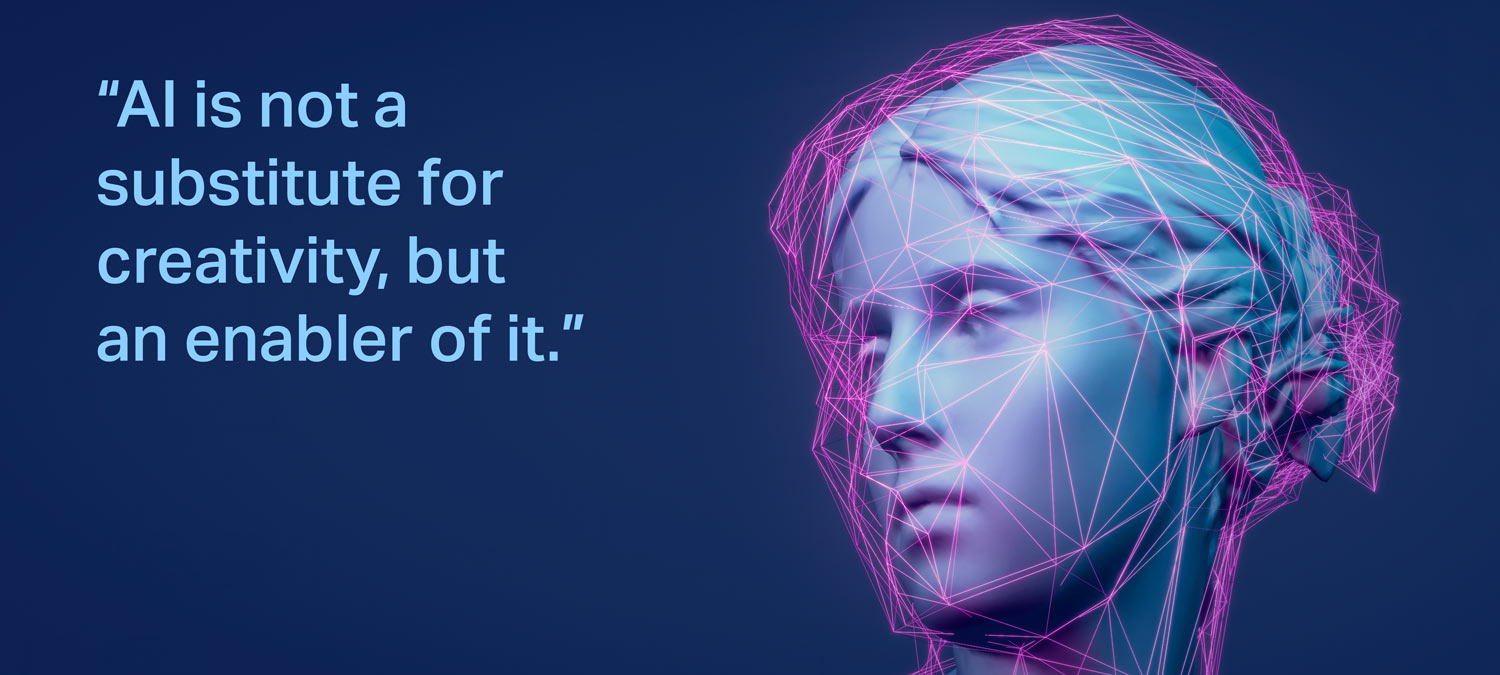Everything we do is designed to get you Where you want to be.™
Everything we do is designed to get you Where you want to be.™

“I’m afraid I can’t do that, Dave.” Remember that creepy scene from “A Space Odyssey” when HAL9000 suddenly refuses to obey human commands? That was one of my first encounters with artificial intelligence (AI). The part where he actually said my name petrified me even more. So excuse my apprehension as I continue to hear that AI will control our collective futures. That being said, I understand that AI is here to stay. And from a marketing perspective, that is probably a good thing. The challenge in my mind is finding the balance. Allow me to explain.
In the ever-evolving marketing landscape, the dynamic between art and science is increasingly becoming a focal point for driving results. With the development of AI, this synergy has taken on a new dimension, reshaping the way businesses engage with their audiences. As author and business expert Simon Sinek once articulated, "Intelligence uses the known to solve problems. Creativity uses the unknown to discover possibilities." Balancing this combination will be essential for successful marketers both now and in the future. Let’s take a closer look at how to make this possible – and profitable.

In marketing, the path to success has often been paved by understanding patterns, observing consumer behavior, and utilizing historical data to optimize campaigns. This is the part of the equation where AI thrives, leveraging its analytical engines to process sometimes complicated data sets and uncover insights. With its ability to identify trends and predict future behaviors, AI empowers marketers to refine targeting, personalize content, and strategically inform ad placements. This data-driven approach to decision-making has revolutionized the efficiency and effectiveness of marketing strategies.
Yet, marketing is not solely about numbers and statistics. It is about captivating hearts and minds, telling compelling stories, and evoking emotions. (At Spoke, we believe you haven’t told your story until someone else can tell it.) This is where creativity reigns supreme. While AI can generate content, design visuals, and even compose music, the human element is and will continue to be important in interjecting emotion and putting a face on brands in a way that leaves positive and lasting impressions with their audiences.
It’s been said that "AI is good at fighting yesterday’s war," and it serves as a reminder of AI's limitations. Left unsupervised, AI can reinforce existing patterns and repeat strategies of the past. To harness AI's full potential and break free from this cycle, a shift in perspective is necessary. AI is not a substitute for creativity, but an enabler of it. By combining AI intelligence with human creativity, the opportunity exists to anticipate and adapt to changing trends – and create new ones – rather than simply following them. (And who doesn’t want to be a trendsetter?)

As we march into an AI-empowered era, let's not forget the essence of marketing: the human element that makes brands connect with people on a deeper level. AI will be instrumental in refining strategies, optimizing processes, and predicting trends, but it's the creativity, inventiveness, and artistry of human marketers that will shape tomorrow. The future is not an either/or scenario; it's a harmonious coexistence where AI enhances our capabilities and propels marketing into uncharted territories while our “humanness” adds authenticity and emotion to every engagement.
Or at least this AI/human coexistence story is how I sleep better at night. Here’s hoping for the best.

There are a lot of great story-tellers, but there aren’t enough story-understanders. When clients have trouble explaining a new value proposition, David can name that tune in fewer words than they imagined possible. When prospects come to us with a symptom, David asks the (sometimes hard) questions that get to the root of the problem. Then he solves it. After decades in account management and creative roles, David is able to bridge the gap between creatives and clients (and back). Oh, and he can tell stories, too.
Let’s create your next chapter and uncover what moves your customers and the sales needle.